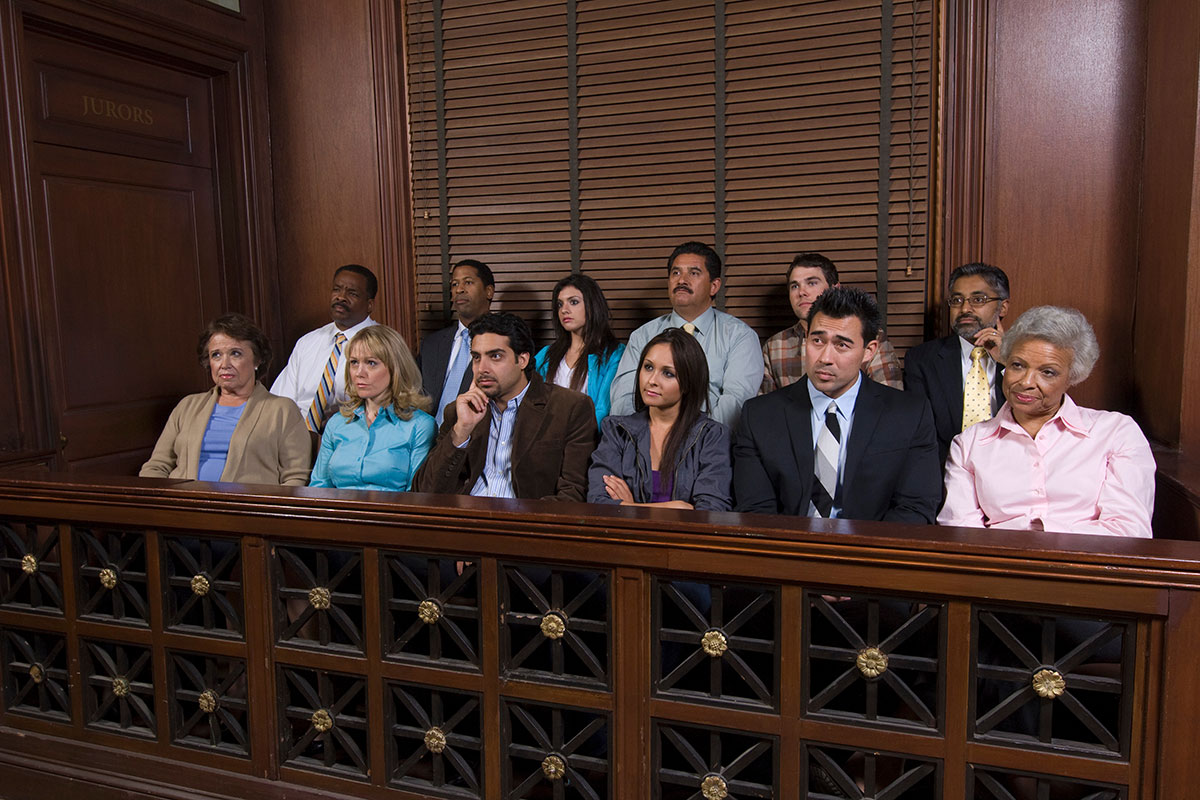The country’s best high school used to have the least-respected sports program in the area. Not anymore.
By Dan Friedell • Photography by David Brooks
Some of the varsity sports teams at Alexandria’s Thomas Jefferson High School for Science and Technology (part of Fairfax County’s system and known locally as TJ) were used to being cannon fodder. In fact, most opponents still schedule their homecoming games and senior nights when Thomas Jefferson is the visiting team, because they think the game will be an impressive walkover in front of esteemed alumni. Popular chants during Colonials road games include a sing-song “Do-our- home-work!” and one softball player tells of an opposing catcher taunting her as she stepped up to bat, saying, “We’ll hurry up and strike you out so you can go back to the dugout and study.” (She promptly hit a home run.) But a savvy athletic director, a cadre of energetic coaches, an influx of well-rounded students and a reorganization by the state’s governing body for high school athletics are pushing this so-called “school for nerds” into the athletic mainstream while maintaining a commitment to science, technology, engineering and math (STEM) education.
The Old Days
Judson Berkey, a Manassas native, now lives in Switzerland and works for the international bank UBS. He’s been living abroad so long, when he talks about projects, he says “proe-jects” as if he were British instead of “prah-jects” like an American. Berkey was a member of one of the first magnet classes at TJ, graduating in 1991. He calls getting accepted to Jefferson “a life-changing event,” that directly connects to where he is today. “I don’t remember anyone [in Manassas] trying to go to an Ivy League school,” says the UVA grad.
But even though Berkey envisions himself as a “nerdy kid who sat in the science lab,” he was also a fairly good baseball player. By the time he was a senior, the Colonials were challenging for a spot in the state tournament thanks to one good player and “a bunch of us who were trying to play a role.”
“We were quite strong in some of the individual sports. I remember us being good in swimming, tennis, crew. A little bit of lacrosse,” he says. “But not the powerhouse sports—football, basketball, baseball. We were the nerds trying to compete with the other schools.”
While that 1991 team finished a run shy of making the state playoffs, losing in the regional semifinals, it showed that TJ might have the potential, every once in a while, to challenge some of the established schools. It was a remarkable year for Berkey, too. His science project—a computer simulation of the trajectory required to get the most distance out of a batted baseball—actually debunked a project done by researchers at Tulane University. It wound up getting him an audience with President George Bush as one of the finalists in that year’s Westinghouse Science Talent Search and written up in Sports Illustrated.
His experience—being on a successful sports team and making a splash in the science community—is the ideal for a Jefferson athlete. Many of today’s students are meeting that standard.
Nov. 8, 2012: Thomas Jefferson football field
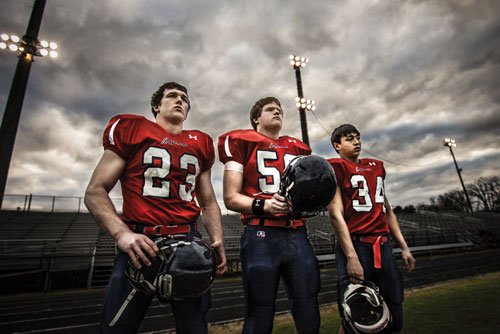
As the director of student activities, Shawn DeRose oversees all of the sports teams and the school’s 175 clubs. He and I are standing on the football field where the Colonials, who have just wrapped up a 6-4 regular season, are prepping for their first-round playoff game against Arlington’s second-seeded Yorktown Patriots. Yorktown has only about 100 more students than TJ, but its football team is annually one of the strongest in the Virginia High School League’s Northern Region. As we’re walking to the field, DeRose is ticking off a laundry list of what he’s done, and plans to do, to make sports more fun and more visible at TJ. He talks about simple things: making sure all the school’s sports uniforms match; painting storage containers on the sports campus; upgrading the bleachers; rehabbing all the blemishes. We get to the field where, as the wind whips and the sunlight wanes, Ken Kincaid (a veteran coach who returned to the sidelines four years ago only because the lure of coaching TJ kids was so strong) is putting his team through its paces. The Colonials were led into the playoffs by a pair of players—Patrick O’Connor and Jack Brown—who will be playing football in college next season. O’Connor decided on Davidson College, while Brown will attend M.I.T., a school that’s always had football, but only recently put emphasis on recruiting football players.
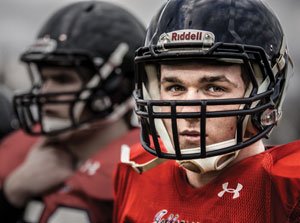
Thomas Jefferson’s football team photo—taken some sunny day early in the year—reveals the two sides of the program. It looks just like any other: shoulder pads stuffed into red jerseys making most of the players seem as if they have no necks. Usually there’s some sort of hierarchy with team photos: maybe the seniors are in front or the biggest kids in back. But this team is seated according to jersey number: the front row goes 2, 3, 4, 5, 6, 8, 9, etc. (It’s not the Fibonacci sequence, but there’s undoubtedly an obsession with numbers at this school.) As a result, O’Connor is in the middle of the second row and Brown is harder to find, in the middle of the third-to-last row.
The Colonials won three games in a row to reach the playoffs (for the first time since 2008, but that year they didn’t even have a winning record!). As much as making the playoffs validated four years of hard work from players like Brown and O’Connor, the game is a let-down. It’s a Yorktown rout, with star running back M.J. Stewart leading a 37-7 win. O’Connor, however, acquits himself well in his final game, scoring the lone touchdown and gaining 168 yards on 31 carries. He finishes with 15 touchdowns and 1,200 yards, one of the best individual football seasons in the school’s history.
“I thought it was a success. We would have loved to play closer in the playoff game, but overall, you can’t call it a bad year,” O’Connor says later in the school year during a break between wrestling matches (he’s also the best 195-pound wrestler in the region and will later challenge for a state title). “Our class kind of showed all the classes beneath us what it takes to get up to that level. They’ve got a path to follow.”
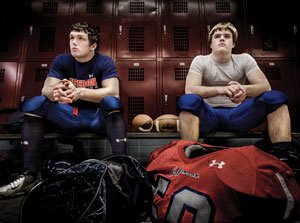
DeRose understands the value of being a part of a football team that makes the playoffs. In 1993, his team from Huron, Ohio made it to the state final four. He’d love to see the kids he’s working with today have the same experience, but he knows that can’t always happen. What he says he does want, however, is to claim for the sports program the same sense of pride and accomplishment TJ students get from competing in STEM events like FIRST Robotics.
“From middle school to high school, some of the best memories I have from that time period happened around athletics,” he says from the stands during a basketball game. “Working together as a team, building relationships, setting goals, it all revolves around athletics. It’s just as valuable for preparing them for later in life [as the academics].”
And DeRose’s passion for sports hasn’t gone unnoticed by the coaches on his staff, their players and even the principal, Evan Glazer, who says if the teams are getting better, “I’d give him all the credit, no question.”
“Shawn is the biggest TJ cheerleader you’ll ever find. He’s all over every event you can get your hands on,” says third-year basketball coach Mark Gray-Mendes, a 2003 Thomas Jefferson graduate. “He’s looking for every opportunity he can to [get the message out] that you can have a great athletic experience at Jefferson. He’s really made that a priority in terms of how he attacks his position.”
Nov. 19, 2012: Thomas Jefferson boys’ basketball practice
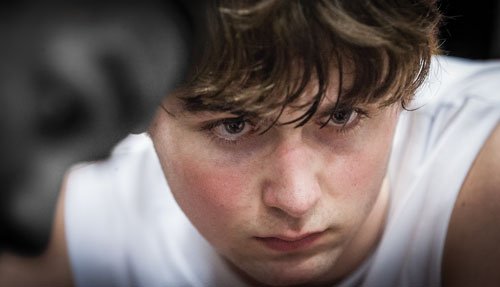
For two hours, Gray-Mendes’ basketball practice at TJ is no different from any of the other early-season practices going on at Fairfax County high schools today. Coaches are putting in basic offenses and defenses; seniors Joe Nissen, Migdam Gebril, David Rice and Marcus Prater are just four of 15 kids dressed in baggy shorts and mesh jerseys running up and down the wood floor passing the ball to each other. But one nugget that illustrates the difference between basketball at TJ and basketball at other schools emerges during the defensive review: Gray-Mendes stops the action and runs onto the court, still wearing his dress shoes from his job as the sports director at the Washington, D.C. Jewish Community Center.
“How much is a lay-up worth?” he asks, getting the attention of his players.
“Two points,” they say.
“How much are two free throws worth?”
The obvious answer is two, but Gray-Mendes has something more subtle in mind.
The smartest basketball players in Northern Virginia are stumped. The kids who haven’t yet taken the SAT will challenge for perfect scores. Nissen, a senior, is a National Merit Semifinalist, one of only 229 students in the Fairfax County to earn the honor this year. (But he’s not alone at TJ. He and his classmates account for over half of the list.)
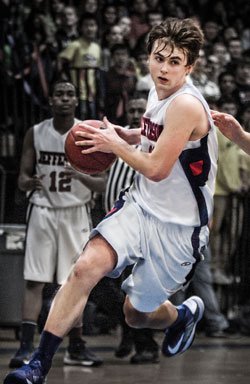
“About 1.4, 1.5,” Gray-Mendes says and starts practice up again.
Mendes is making the point that it’s better to commit a foul and force an opponent to take two free throws (conversion percentage: 70), than give up an uncontested lay-up (conversion percentage, about 100). A fraction of a point here and there will probably make the difference between a winning and losing season for the Colonials.
Golfer Julie Luo, a 10th-grader, is perhaps the best golfer in the state, male or female. Swimmer Andrew Seliskar, also in 10th grade, already has four individual state titles from his first two years of high school. He’s an exemplary talent who will make the Colonials a challenger for the state title for the next two years, and perhaps we’ll even see him in the Olympics in Brazil (yes, he’s that good).
This is not a story designed to minimize those accomplishments. But as Berkey says, the TJ teams have traditionally been strong in sports that involve endurance or celebrate individual excellence, and there’s no reason why that won’t continue (crew is in the mix, too). That’s why the football team’s 2012 season was remarkable, and boys’ basketball is the star of this story; going back more than a decade, the team struggled to win even five games in each year’s 20-game season. (The math is easy: their record from 2000-2010 was 48-190. But as long as the high school was fulfilling its mission and ranked either No. 1 or No. 2 on U.S. News and World Report’s list of the top high schools in America, no one was too worried about the basketball team.)
Then an opportunity arose to change the perception of the program.
Mendes and DeRose don’t love talking about what happened in the weeks leading up to the 2010-11 season. They don’t want to scratch open an old wound. But constructing a narrative from conversations with DeRose, Gray-Mendes, Glazer and a story published in the Washington Post isn’t hard.
Tired of losing seasons, mitigated expectations and a feeling of being only minimally prepared, the players (some say they were encouraged by a group of parents) took their complaints to then-coach Ed Grimm and asked him to step down. Gray-Mendes, an assistant, took over.
The team went 11-11. A year later, the Colonials won their first playoff game in over a decade, defeating South Lakes High School in the opening round of the Liberty District tournament.
While it would be nice to finish with a winning record this year, says Gray-Mendes in a preseason conversation, his goal is to have the team prepared to do well in the playoffs, which means winning a couple of games in the Liberty District tournament and doing more than just making it to the Northern Region tournament.
Since each student who attends TJ must make it through rigorous application process, those who get in are applauded—and reasonably so. By the time they arrive on campus for the first day of school, they know there’s something special about themselves and the school they’re about to attend. (Maybe it’s not just like Harry Potter arriving at Hogwarts for the first time, but it’s in the same ballpark.)
So how does the basketball coach treat his players, who are taking a schedule full of demanding classes like Energy Systems? “We try to treat them like we would any other athlete. And they appreciate that,” says Gray-Mendes. “When we show up for a game against Langley or Fairfax, we don’t get spotted five or 10 points just because our kids have homework.”
Dec. 18, 2012: Oceanography Lab
By the time I see O’Connor again, it’s late December, and his wrestling season has been going great. He’s on pace to reach his 100th career win in early January. But I’m not on campus watching a sporting event. I’m sitting in on teacher Lisa Wu’s first-period Oceanography class.
The classroom is a converted biology lab, with fish tanks everywhere. Wu says she’s gotten to know a lot about plumbing in the time she’s taught the class, since there’s always some type of water emergency (the wrinkled boxes on the floor next to me are evidence of a recent flood). Retired from a year-old project, the class mascot is a TV-watching octopus. This oceanography class is just one choice for students taking part in the school’s senior research project. Each project is impressively sophisticated for a 17-year-old—a golf cart that uses GPS to automatically follow its player (robotics), a self-propelled fish (prototyping) or those here that take advantage of access to shrimp, lobsters, blue crabs and jellyfish—and a year-long investigation culminates in a paper and presentation. During the class period, O’Connor and his partner spend a good chunk of time figuring out how to attach an electric sensor to a strip of wire (Is the better choice solder or silicone sealant? They go with silicone.) They’ll be measuring the “heartbeat” of lobsters, 20 of which are en route from an aquarium in New England.
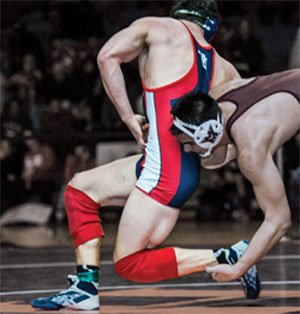
An hour later, Clint Behling, the prototyping teacher who’s also O’Connor’s wrestling coach, talks with me about 3-D printers called Maker Bots. I go across the hall to check out the robotics lab led by Chuck Dela Cuesta. That’s where the students are working on the golf cart. If TJ were a movie theater, these classes would be on the marquis.
“Some high school kids are lucky to be building birdhouses” says Behling, looking around at diagrams on the wall and students wearing safety glasses while operating impressive machinery. “We just ask for something and eventually we get it.” (Later in the year, Behling relays a story of what other schools think about playing sports against TJ: Coaches implore their players to stick it to Colonials athletes at every turn, saying “these guys will be your bosses someday, so if you win tonight, you’ll be able to rub this in their faces for the rest of your lives.”)
Even though it’s just a few days after the school shootings at Sandy Hook Elementary in Connecticut, this school is not locked down during lunchtime. No scowling adults are prowling the halls waiting to nab an unmonitored student. Pods of them hang out together in the hallways or classrooms, getting extra time in front of a computer trying to write code that will help a small robot make it through a maze or working on translating pop songs into Latin. But the cafeteria has its perks, especially the “senior lounge”—an area exclusively for 12th-graders with big screen TVs for video games, ping-pong tables and a selection of donated, rec-room-reject couches. Three years of hard work does pay off, it seems.
The day wraps up with the technology portion of the Integrated Biology, English and Technology (IBET) program, which is designed to immerse ninth graders in the basics of scientific writing and thinking. Craig Lewis, also the baseball coach, with his close-cropped beard, windowpane-checked shirt and gray chinos is talking about LED lights, circuits, resistors and capacitors underneath a cartoon mural that reads “I Can’t Resist You.” One bookshelf has, fittingly, “Mockingjay,” “Moneyball” and the “Baseball Coaching Bible.” It’s quiz review day and the students compete for Lewis’ attention: “Mr. Lewis, I raised my hand first,” they whine, and just like every other high school student in the nation dressed in Hollister sweatshirts and UGG boots “Is this going to be on the test?” is a popular question.
Jan. 8, 2013: McLean High School
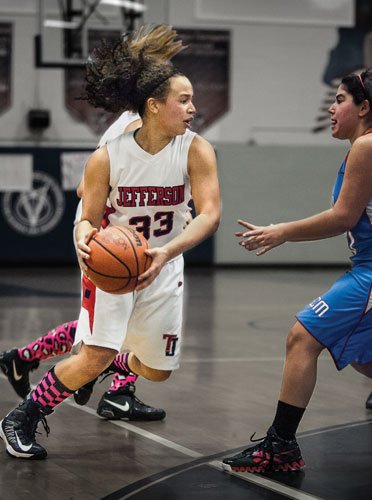
I arrive at McLean to see both the girls and boys basketball teams play. The boys’ basketball team stumbled out of the gate, going just 1-6 to open the season. In fact, the first time I saw them play, they played the kind of game that led to their old coach being forced out. They lost 67-37 to a big, athletic Langley team paced by two players who will be playing a Division I sport in college (but not basketball). The season has turned, however, as they’re riding a five-game winning streak and the championship of the Falls Church Joe Cascio Classic. Those fractions of points Gray-Mendes was talking about in November turn out to be the difference in a couple of games: heading into the New Year, the season’s then-highlight was sophomore center Sharan Arkalgud’s buzzer-beating tip-in to win the Cascio tournament. A week later, Gebril upped the ante as he calmly nailed a 12-foot, last-second jumper in Vienna to beat James Madison (one of those schools that just happens to schedule its football homecoming for when TJ is the opponent). But on this night, the Colonials have a sense of history. There hasn’t been a six-game basketball winning streak, nor a win at McLean, since 1989.
While the girls’ game makes for a weak lead-in, as 6-foot-2 Lisa Murphy and the Highlanders use a size advantage to demoralize the Colonials early and run off nearly a 20-point win, the boys come out fighting. There are no easy lay-ups for McLean. The Colonials go for every loose ball. Get in the way of every pass intended for McLean’s 6-5 John Pascoe. Challenge 3-point shots. Gebril slithers through tiny openings in the defense for lay-ups and Arkalgud proves to have an adept left-handed touch inside and the ability to frustrate Pascoe on the other end. But even after all this, the Colonials trail, 19-15, at halftime. But that’s when the magic happens.

Unfazed by the deficit, they come out of the locker room and play five of the best minutes of high school basketball I’ve ever seen. Gebril nails a three, Prater follows him up, Nissen comes next and Prater hits another three. McLean hasn’t scored for five minutes while TJ has scored 12 straight points to make it 27-19. It’s the kind of thing the old TJ never did, especially on the road.
“For years they played really well at home, but now it doesn’t matter where you play them,” says veteran J.E.B. Stuart coach P.J. Kelly, whose Raiders lost back-to-back games to Thomas Jefferson, including the Cascio tournament finals. “Now you could lose on your home court. The word is out.”
And McLean loses. It comes down to TJ making free throws in the game’s final seconds while McLean misses a desperation 3-pointer at the buzzer. For the Highlanders, it’s just a loss, easy to brush off. But for the Colonials, a deserved celebration breaks out midcourt. Perhaps the win, the feeling that “Hey, we did something no other team has done in a long time,” brings with it a sense of finality. They get blown out a couple days later against Stone Bridge, but regroup three days after that to beat a solid Marshall team thanks to another dominating second-half run.
The home screen on Gray-Mendes’ iPad, the device he uses to review game film and send scouting reports to his players, shows the basketball team’s blank banner hanging in the gym. His goal is to force DeRose to splurge for some numbers like “2014” to put under “District Champions” or “Regional Champions.” It didn’t happen this year, though. The Colonials struggled after the big wins over McLean and Marshall, losing eight straight to end the year. The key game turned out to be a 68-64 home loss to Madison, the team Gebril sunk with his earlier heroics. Because of the loss, the Colonials had to face Langley—the team they matched-up worst with—in the first round of the playoffs and lost 48-30. One player’s father said he thought his son struggled to stay focused on basketball when the midterm exams began in late January. Gray-Mendes, wasn’t so sure, but agreed that his players couldn’t sustain the intensity in February they had shown in January. But on a positive note, the Colonials did win road games against Marshall and McLean, the Liberty District’s finalists, showing that even with an admittedly poor 8-15 record, the team is making strides. He’s committed, however, to making playoff wins a regular thing.
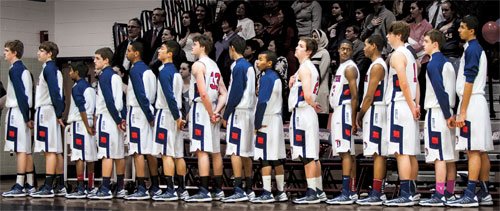
And winning games isn’t a pipe dream, either. There are changes ahead that should positively impact the football, basketball and other teams at Thomas Jefferson. The VHSL last fall ratified a reorganization plan that DeRose thinks will even the playing field for his teams, not only in district play, but once they reach the playoffs. Yorktown, for one, will not be in the Colonials’ playoff pool. TJ will compete in the yet-to-be-named “5A-North Conference 13” beginning with the upcoming school year. Opponents will be Marshall, Edison, Falls Church, Mount Vernon, Stuart, Wakefield and Lee. In football, only Edison and Lee have made the playoffs in recent years. The teams that have struggled—volleyball, girls’ basketball, field hockey, softball and baseball—will find themselves winning many more games, while the teams like football and basketball that have emerged recently will have a chance to finish seasons with significantly more wins than losses. Sean Burke’s soccer team, the only major sport at Thomas Jefferson to have won a recent state title (2007) should flourish.
But it’s risky business, still, to project too far into the future for TJ. That’s because unlike schools such as Westfield (football) or Oakton (girls basketball), there’s no pipeline. The admissions test prevents that. There’s no way to evaluate the athletic talent coming the school’s way and say, “We’ll be great in 2018.” Families who have a relationship with a coach based on an AAU program can’t move into the district before high school and expect their child to attend TJ. Kids can’t easily get to school for unofficial conditioning practices in the summers like they can at other, neighborhood schools. The best Thomas Jefferson’s administrators can do is make sure everyone who applies to the school knows it has a full-fledged athletic program and reach out to those students in the limited months between their acceptance and the first school day. (Some schools in U.S. News’ top 10 are like TJ. Others allow magnet students to compete in sports for their “base” school. Many, however, are too small to support sports at all.) The best way to hedge against this disadvantage is to make sure the school has the best coaches it can possibly find. Coaches who understand the pressures Thomas Jefferson students feel every day.
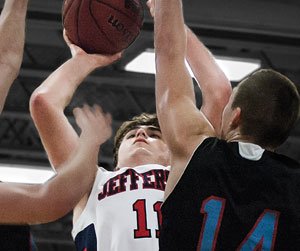
“Everyone around you is as serious as you are. Whenever I hang out with my friends we end up talking about school,” says Clara Pitts, the varsity softball catcher who’s also the manager for the wrestling team. “You go to practice after school, it’s hard to leave that behind. [It’s hard not] to think about what tests you have the next day.”
Coaches who work in the school—like Behling, Burke and Lewis—are hard to find, according to Glazer.
“The instructional population is extraordinary. … It takes an incredibly gifted teacher to serve as a teacher and a coach here,” says Glazer. “Shawn’s got to recruit coaches who never get to see students during the day. Some other schools may have coaches who can stand in the hallways and pick out [potential players].”
At the same time, coaches are often able to take advantage of extremely motivated kids who work to finish projects before they are due, who do homework on the road, do their part to hustle through an efficient practice and who can tell you that the square root of 69 is an irrational number, and not just a double entendre-filled line from a Rihanna song. Pitts tells of being heckled by an opposing school’s football team as she and her teammates were getting warmed up for a field hockey game.
“Hey TJ, what’s the square root of 69?” yelled a player from the other team.
Pitts said a teammate replied, hands on her hips: “That’s an irrational number!”
Even after all that—the upstart basketball team, the role models on the football team, the great individual athletes like Seliskar and Luo—there’s still some uncertainty about how to properly place sports at a school like Thomas Jefferson.
My conversation with Glazer goes in circles. The main thing he wants to do is show me how well liked he is by all of the extra-curricular groups at the school. For every t-shirt he has from the Latin Club or the school musical, he has one from the swim team. And he seems to love the “Thomas Jefferson: We Came for the Sports,” bumper sticker that hasn’t been produced for a few years but can still be found on some cars driving the beltway. I argue that it’s too tongue-in-cheek and was only effective in making its point when the sports teams were sub-par. How about something new, along the lines of “Vini, Vidi, Vici,” I ask. He says it’s not necessary, but would probably argue that something along those lines could work for the robotics team, a TJ squad that’s supposed to be good.
“The bottom line is our school has a specific mission and that starts with providing a challenging arena for math science and technology and the other aspect is promoting joy at the prospect of discovery,” Glazer says, adding extra-curricular endeavors in arts, culture and sports are somewhere lower on the list.
His point of view doesn’t address the fact that many of today’s students are looking for more from their four years than just the opportunity to add to their resume before moving on to college. They’re looking for “victories” in more than just the classroom. A high-quality sports program can help add some depth to an already deep high school experience.
Encouragingly, it turns out that the TJ homecoming weekend is a legitimate party. “That’s the best social experience I’ve had. There’s so much school spirit. It’s phenomenal here,” says Rebecca Clark-Callendar, a sophomore basketball player. “It’s much better than you’d think.”
And if attending a homecoming football victory is spectacular, as it was last October when the Colonials defeated Marshall, just think how great a home playoff football victory could be?
It might just get irrational. How’s that for a number?
The Ones Who Got Away
Even the extraordinary class choices and rich atmosphere provided by Thomas Jefferson can’t capture every student who is accepted. We found two students—Cara Cunningham and Jack Forrest—who could have contributed star power to the sports teams and kept up with their classmates in the labs, too, but will not be graduating from TJ.
Cara Cunningham
Class of 2014 – Volleyball,
Robinson Secondary School
Before arriving at Thomas Jefferson for ninth grade, Cunningham had been a swimmer and rec-league basketball player and never seriously applied herself to volleyball, even though she was already 5-11. Now 6-foot-3, Cunningham is an exciting college volleyball prospect with serious recruiting attention from Georgetown and Cornell.
The commute from her home in Fairfax Station, her commitment to a club volleyball team that practiced in Sterling and played tournaments in places like Denver, Las Vegas and Orlando, and an increasing workload pushed her to the brink of illness by the end of her freshman year. Even still, she had a 4.1 GPA and wanted to stay at Jefferson.
Cunningham talks about getting home from school at 5 p.m. (the school’s 8:30 a.m. start and 3:50 p.m. finish makes for a later day than most area high schools), and almost immediately leaving for volleyball practice. Cara and her mother, Linda, wouldn’t get home until after 11, and midnight was bedtime. She would set her alarm for 3 a.m. to get up and do homework until it was time to leave for school again. It became an untenable schedule.
Coming from TJ, she would have spent this summer and next fall sweating over college admissions. Now, because she chose to invest in volleyball, these top schools are chasing her, and she will have made her college commitment by the time her senior year starts.
Jack Forrest
Class of 2016 – Football, Basketball and Lacrosse
The Bullis School (Potomac, Md.)
Jack Forrest’s YouTube videos show a speedy, fearless lacrosse midfielder and football running back. It’s easy to envision him taking over the reins from O’Connor and teaming with Nick Lemanski, another Loudoun County-based Jefferson student, to form a potent football backfield. Unfortunately for the teams at TJ, Forrest is now a freshman at the Bullis School.
He’s already a Division I prospect in lacrosse thanks to his performances at camps, showcases and for his club team, Madlax. He took part in some summer-league games with the Thomas Jefferson basketball team and met with the football coaches after getting accepted around this time in 2012.
“It was a huge deal” says Forrest. “It was like ‘oh wow,’ telling people you got into TJ.” Forrest says he was on the verge of going to Thomas Jefferson, but at the last minute, he looked at Bullis, was impressed with the quality of the players with whom he’d get to play lacrosse, and changed his mind. One of the key reasons Forrest backed away from TJ was that the Colonials had yet to hire a varsity lacrosse coach for 2012-13. “It was a very close decision.”
Watch For
The atmosphere at TJ when it comes to sports is unique. Students qualify for admission only after clearing two hurdles: a standardized test similar to the SAT and a second battery of proctored short-answer questions. Those who are accepted face a challenging academic career of STEM and traditional classes. For some, the draw of their local, or “base” school is strong: If you’ve dreamed of playing football for Westfield, for example, it might be hard to pass that up. Others pass up attending TJ and choose prestigious private schools instead. But for those who come, the payoff is impressive, with the majority attending top colleges within the state (UVA, Tech and William and Mary) and without (the Ivies, MIT and Stanford). Of the over 200 National Merit Semifinalists at TJ this year, nearly half participated in a sport at one point. Here are some athletes who have risen to the top of their sports while attending TJ.
Class of 2012
Richard Kuzma, Basketball
The leading scorer on TJ’s basketball team from 2010-12, Kuzma was a key reason why the Colonials won their first playoff game in a decade by beating South Lakes in 2012. He commuted to the school from his home in Leesburg, which meant a one-hour bus ride from the parking lot of Stone Bridge High School each morning.
He’s now attending the U.S. Naval Academy and playing basketball (even though he’s not playing Varsity as a freshman) and is an example of a recent athlete who was able to excel at his sport while also taking advantage of other enrichment opportunities like serving as treasurer of the investment club and a member of the National Honor Society. That’s along with taking classes such as Multivariable Calculus, Geosystems, Organic Chemistry and more as a senior.
“TJ is a phenomenal community,” he says. “The teachers are great and the people are what really make it. I loved every minute of it, from the sports to the classroom to going out with my friends. It’s possible to have your academics, athletics and your social. You might sacrifice a little sleep. And at some point, you’ll have to make trade-offs. But that’s part of life.”
Class of 2013
Patrick O’Connor, Football and Wrestling
O’Connor arrived at Thomas Jefferson for ninth grade only a year after moving from California. He spent that year at Robinson Secondary School in Burke, and got a taste of the high-powered sports program the Rams offer. Had he stayed at Robinson, O’Connor could have been a part of a Robinson football team that made the playoffs every year and a wrestling team that won a state championship in both 2011 and 2013. Instead at Thomas Jefferson, he became perhaps the best contact sport athlete in the school’s history, leading the football team to the playoffs in 2012 and capturing the regional wrestling title at 195-pounds the last two years. When he finished as the state runner-up a few weeks ago, he became the first state wrestling finalist from Thomas Jefferson in 24 years.
“It’s a lot closer to a regular high school than people might think, but [TJ] does have that special edge,” says O’Connor. “If I had to do it again, I’d go back.”
Class of 2014
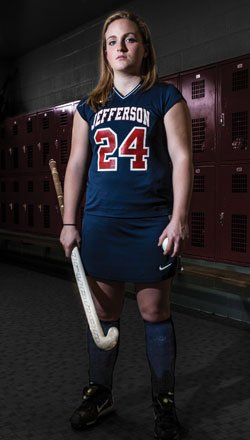
Clara Pitts, Softball and Field Hockey
Pitts’ mother, Denise, says she knew her daughter had the make-up to go to Thomas Jefferson as early as first grade. It probably had to do with some “experiments” she was doing with the cicadas that were everywhere that year.
“I’ve always been pretty science-y, I would tie strings to them and test how much weight they could carry and put tags on them,” she says while there’s a break in the action at Thomas Jefferson’s wrestling meet at Chantilly High School, where she’s the team manager in addition to being the starting catcher on the softball team and a field hockey player. “But really, someone once told me that Thomas Jefferson was the ‘best’ school, and I’ve always wanted to be the best, so I said to myself I had to do whatever it took to get into go there.”
Pitts came up through the ranks as a member of the competitive Vienna Stars club team, but had to put that aside when she realized she couldn’t make enough time to do everything she enjoyed and still keep up with her teammates. But that doesn’t prevent her from starring during the school season for the Colonials. She’s been the team’s best power hitter for the last two seasons, homering twice and drilling 22 other extra-base hits in her career.
Class of 2015
Andrew Seliskar, Swimming
It’s not unreasonable to predict that Seliskar will challenge for a spot on the 2016 U.S. Olympic team. One of the only people in the country who’s faster than he is in the 200-meter individual medley is Ryan Lochte. He recently took over the age-group record (16-and-under) for the short-course 100-yard breaststroke. Just the fact that he has two more years left at Thomas Jefferson makes the Colonials a contender for the boys’ state title in 2014 and 2015. They finished fourth in 2013, as Seliskar won a pair of individual titles and helped the team win the 200-yard medley relay.
Seliskar’s brother, Stephen, now a freshman at Purdue University, paved the way for Andrew at Thomas Jefferson. The Seliskar home in McLean is used to late nights of building robots or working on homework while out of the state for national level swim meets.
“The teachers don’t like you getting behind. One kid gets behind it takes away from the whole class,” says Andrew. “I have to stay after school and work extra hours to get the project done. It’s not like some of the places – some friends of mine would not take tests that they missed. That doesn’t fly at TJ.”
Rebecca Clark-Callendar, Basketball
Clark-Callendar had four options this time two years ago. She could go to West Springfield, her base school, where coach Bill Gibson leads a girls basketball program that’s a regular in the state playoffs and boasts Olympian Kara Lawson as an alumna. She was accepted to both Sidwell Friends and Georgetown Day. Or she could have gone to Jefferson. “I didn’t know until the last day where I wanted to go. It was very back-and-forth. I did a number system, I did dart-boards, I did everything you could possibly do.”
She’s the kind of athlete other schools would love to have, and she chose TJ. It’s with players like that – those who manage to make time for school and AAU basketball in the summer (she’s a member of The Vogues, a top local team) – that first-year coach Liz Reed hopes to build her program. Her players need to believe every game is winnable.
“If we’re in a game for a half, there’s no reason we can’t sustain that for four quarters,” says Reed, who played basketball at the University of Chicago and is a coach with one of the top girls’ AAU programs in the state. “If a team hits a three, it’s ‘OK, they made a good shot,’ just bounce back from it. And we’ve been getting better at that.”
Sharan Arkalgud, Basketball
He almost didn’t decide to play varsity basketball this year, but the Colonials boys’ team would be unremarkable without the 6-foot-6 sophomore. The highlight of his career so far came just before New Year’s Day, when he helped the Colonials with the Joe Cascio tournament at Falls Church High School. Trailing by one with eight seconds to play, Howard Small brought the ball up court and barely got the ball to Marcus Prater before the Stuart defense pounced. Prater fought his way through traffic and launched a 19-footer towards the hoop. Arkalgud was there, leaping to grab the errant shot above the outstretched arms of the Stuart players, gathering himself and letting the ball go hoopward as the buzzer sounded. A controversial shot that could have gone either way, but it went in favor of the Colonials, giving them their first celebratory moment of the year.
“I love the game of basketball, but I thought I could handle my studies, too,” he said after the first game of the Cascio tournament. “I try to get a lot of homework done before practices, so it’s starting to get a little bit better.
(April 2013)




